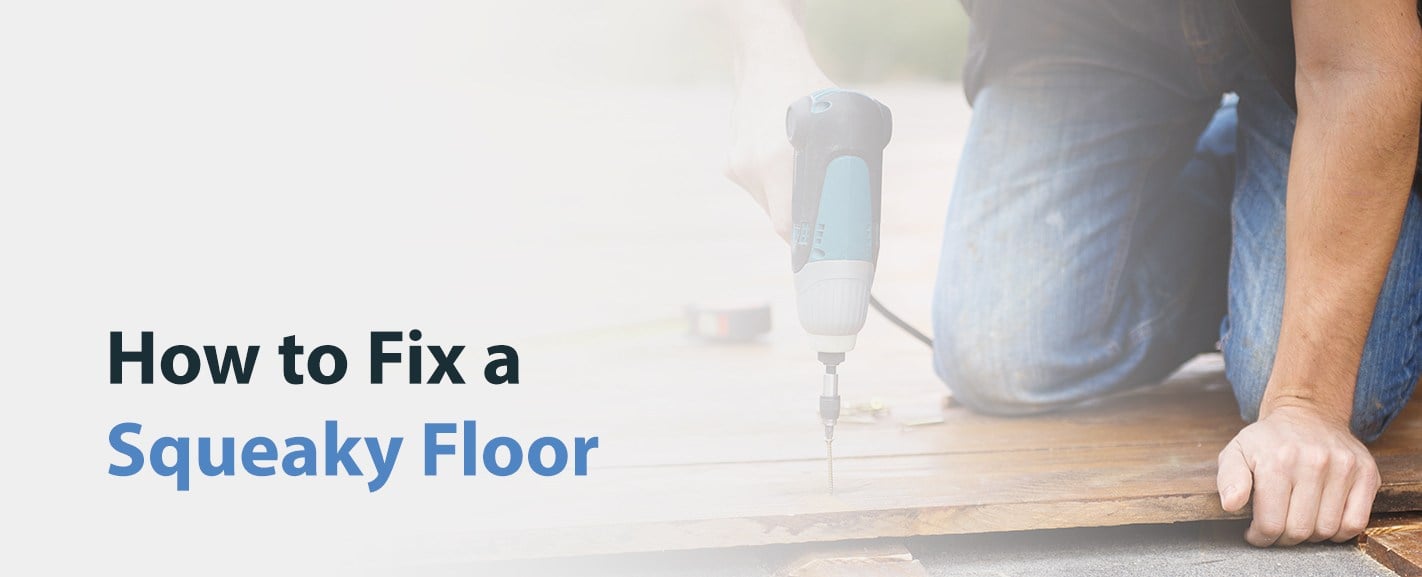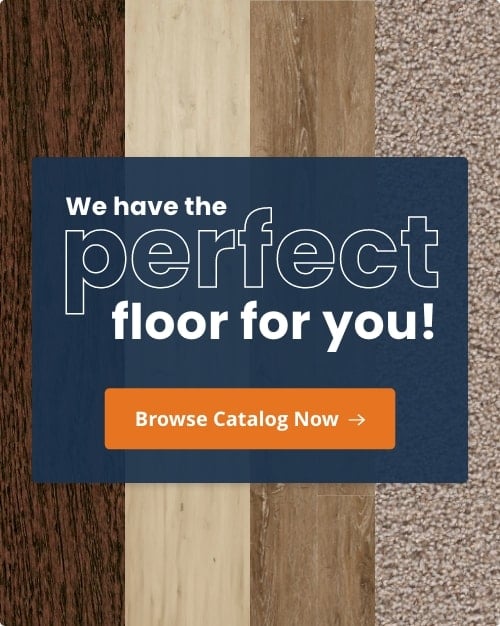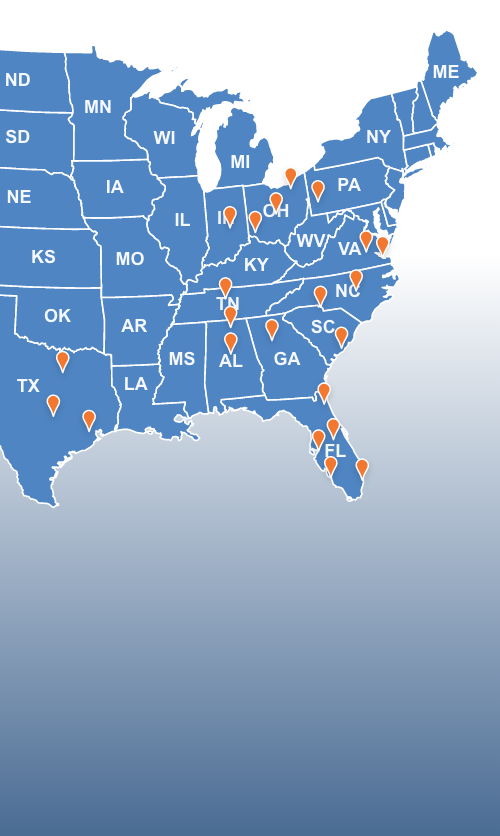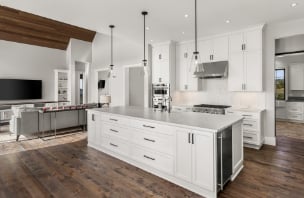

Squeaky floors might come in handy when you need to know if your teenage kids are out past curfew, but otherwise, the noise can be annoying. If you live in an older house and notice your flooring is making too much noise as you walk on it, use this guide to learn how to fix squeaky floors.
Causes of Squeaky Floors
Your house might have squeaky floors because there’s a gap between the hardwood floorboards or subfloors and the joists underneath them. Here are some of the reasons why the flooring might have spaces between the panels:
- A dry indoor climate: Changes in temperature and humidity cause your floors to expand and contract. When the weather is cold outside, most homeowners turn up the heat inside their homes, drying out the indoor air. As a result, hardwood flooring could shrink, putting additional pressure on the fasteners. Even when the house returns to a more acceptable humidity level, the floorboards won’t be connected to the joists as tightly as before.
- Issues with the subfloor: If you live in a new construction home or recently had your flooring redone, you could have squeaky floors if the specialist didn’t install your subfloors properly. It could be out of level, or there could be spacing between it and the joists. If you have subfloor problems, putting additional flooring material on top to cover up the sound won’t fix it. Check with the flooring specialist to ensure they install material with the appropriate resin content so that it isn’t too hard.
- Improper installation of fasteners: Besides putting in the subfloor incorrectly, the specialist could’ve applied the wrong fastening units. You could also have over seated hardware that pushes the floorboards higher off the ground, creating a gap between the floorboards and joists.
When there’s a space between these elements of your flooring, the nails and screws holding the panels together could rub against the wood, creating the squeaking sound you hear as you walk on certain parts of the floor.


How to Fix Squeaky Hardwood Floors
If you want to repair the annoying sounds you hear as you walk throughout your house, here are some tips for fixing squeaky floors:
- Find the source of the noise: Ask a friend or family member to walk around the room with the squeaky floors. When they arrive at a noisy spot, use painter’s tape to indicate where you need to work.
- Add a wood shim: Creaky floorboards usually occur when the subfloor separates from the floor joists. Once you know the squeak location, place a wood shim in the middle of the subfloor or floorboard and the joist. If this solution stops the squeaking, take out the shim, apply the carpenter’s glue to the area, and put it in again. Only put the shim in far enough for the squeak to stop, because if you jam it into place, it could make the squeaking worse.
- Cleat the subfloor: If several of your floorboards are squeaking, you could use a solid piece of lumber called a cleat instead of shimming your boards individually. Cut the block to fit snugly in place against the joist, and use drywall screws to secure it to the floors. You may need to use steel bridging to stabilize the subfloor if you have squeaking over a large area because that means the floor joists cannot support the flooring material above them.
- Use a two-by-four: You could cure a bent, twisted or damaged joist by increasing its thickness with a sturdy two-by-four next to it. Join this piece of wood to the floorboards or subfloor and attach it to the joists with nails.
- Create an adhesive bond: Wood shims can fix squeaks from an isolated area of the floor, but construction adhesive can repair a long gap between the joists and the subfloors. Using a caulk gun, apply the appropriate amount of construction adhesive in the middle of the subfloor or floorboards and the joists. If you notice a gap on the other side of the joist, you can also apply it there. Once the product has hardened, it can keep the joists in place.
- Fix gaps inside the joists: Besides repairing your floors vertically, you should also consider how to fix them laterally. If you notice that your joists need adequate blocking, cut two-by-eight wood pieces to go between the joists’ midpoints. Tap these blocks into place and use nails and a hammer to attach them to the joists.
- Squirt powdered graphite onto the boards: Using baby powder or powdered graphite on your floors is a quick fix for squeaky hardwood floors. Your engineered hardwood or solid wood floorboards might be squeaking because there’s not enough space between them, so some pieces are rubbing together. To remedy this problem, apply powdered graphite between the boards. Use a brush or soft cloth to blend it between the seams, and clean up the rest with a vacuum.
- Regulate the room’s humidity: When wood flooring is too dry, the floors could start squeaking. Put a humidifier in the area to increase its moisture content and fix your creaky floors.
- Put screws into the subfloor: If you have wall-to-wall carpeting, resilient flooring or floating floors, you have a subfloor underneath it. You can easily remove the flooring on top to access the subfloor. After you’ve located the joists, put several screws through the subfloor to the joists by the areas where your floor is squeaking.
- Drill a pilot hole: If you have engineered or solid hardwood floors, you can go directly above the joist and create a pilot hole through the panel at an angle. Nail through the hole with a hammer. Use a nailset to hammer the nail below the wood, and cover the hole with a corresponding wood filler. You can do this step from either the top of the floor or the bottom.
- Cut a spot in the carpet: If you can’t pull back your carpeting, create an area that exposes the subfloors. You can use a utility knife to cut several of the fibers to see the floor underneath them. After you have an exact spot, drive a screw into the subfloor until the screwhead lies flat against the carpet’s back. Cover up the area by grooming the carpet pile in place by hand.
Schedule an Appointment With 50Floor for Squeaky Floor Repair
If you need some assistance fixing the squeaky floors in your home, you can schedule an appointment with us. We provide a floor care guide to help you take care of your particular flooring material. Call us at 1-800-50-FLOOR if you have any questions about our products or services.




